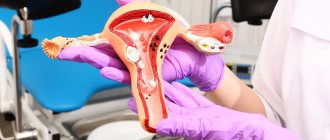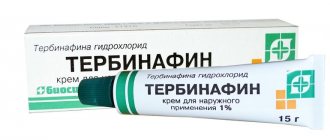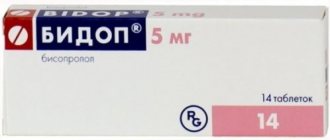Dexamethasone is a steroid drug with anti-inflammatory and immunosuppressive effects. It is used to treat rheumatoid diseases, asthma, allergies, chronic obstructive pulmonary disease and many other diseases. According to the results of the RECOVERY clinical trial, which involved more than 6 thousand patients with coronavirus infection, dexamethasone reduced the mortality rate of patients with COVID-19 who were on mechanical ventilation by a third.
After this, the head of the World Health Organization (WHO) called these results a “scientific breakthrough.” However, the study has not yet been peer-reviewed or published in any scientific journal. The authors promise to do this in the near future.
Why should dexamethasone be taken with caution?
“[Side effects] are the same as other drugs in this group - increased susceptibility to thrombosis, increased blood pressure, increased blood glucose levels, the ability to cause stomach ulcers, and so on. This is a serious drug, for serious situations with serious side effects. Therefore, only an experienced doctor will understand what’s what,” said Kagan.
The doctor explained that the drug, according to preliminary results of the study, does not affect the virus itself, it only reduces the excessive inflammation that occurs in the body after infection.
Kagan did not recommend using this drug as a preventive measure or in the first week after coronavirus infection, as it suppresses the immune system. “This can only help the virus,” the doctor explained.
In general, as Kagan explained, dexamethasone has been known to mankind since the 1960s and has long been registered for the treatment of autoimmune diseases in all countries, including the USSR and Russia. Traditional therapy for many autoimmune diseases, such as systemic lupus erythematosus, glomerulonephritis, bronchial asthma, Kawasaki syndrome, autoimmune thrombocytopenic purpura and others, is based on corticosteroids.
It is logical to use corticosteroids for coronavirus infection, the doctor noted, but there were no clear recommendations, since there was no previous evidence of the effectiveness of this drug against COVID-19. In addition, doctors are aware of the risks of using such steroids. At the same time, in the seventh version of the temporary guidelines of the Ministry of Health “Prevention, diagnosis and treatment of new coronavirus infection” dated June 3, there was a recommendation that this drug can be used in severe cases of the disease, Kagan noted.
“It should be noted that in the UK the dose of dexamethasone was used significantly lower than that recommended by our Ministry of Health - 6 mg per day (in domestic recommendations - 20 mg per day. I think that the British managed to find the optimal dose, which already provides a positive effect and minimizes side effects “, concluded the doctor.
Publications in the media
Pharmaceutical group - glucocorticosteroid.
Pharmaceutical action. GCS is a methylated derivative of fluoroprednisolone, inhibits the release of interleukin1 and interleukin2, interferon gamma from lymphocytes and macrophages. It has anti-inflammatory, antiallergic, desensitizing, antishock, antitoxic and immunosuppressive effects. Suppresses the release of ACTH and beta-lipotropin by the pituitary gland, but does not reduce the level of circulating beta-endorphin. Inhibits the secretion of TSH and FSH. Increases the excitability of the central nervous system, reduces the number of lymphocytes and eosinophils, increases the number of red blood cells (stimulates the production of erythropoietins). Interacts with specific cytoplasmic receptors and forms a complex that penetrates the cell nucleus and stimulates mRNA synthesis; the latter induces the formation of proteins, incl. lipocortin, mediating cellular effects. Lipocortin inhibits phospholipase A2, suppresses the release of arachidonic acid and suppresses the synthesis of endoperoxides, Pg, leukotrienes, which contribute to inflammation, allergies, etc. Protein metabolism: reduces the amount of protein in plasma (due to globulins) with an increase in the albumin/globulin ratio, increases the synthesis of albumins in liver and kidneys; enhances protein catabolism in muscle tissue. Lipid metabolism: increases the synthesis of higher fatty acids and TG, redistributes fat (fat accumulation mainly in the shoulder girdle, face, abdomen), leads to the development of hypercholesterolemia. Carbohydrate metabolism: increases the absorption of carbohydrates from the gastrointestinal tract; increases the activity of glucose-6-phosphatase, leading to an increase in the flow of glucose from the liver into the blood; increases the activity of phosphoenolpyruvate carboxylase and the synthesis of aminotransferases, leading to the activation of gluconeogenesis. Water-electrolyte metabolism: retains Na+ and water in the body, stimulates the excretion of K+ (MCS activity), reduces the absorption of Ca2+ from the gastrointestinal tract, “washes out” Ca2+ from the bones, increases the excretion of Ca2+ by the kidneys. The anti-inflammatory effect is associated with inhibition of the release of inflammatory mediators by eosinophils; inducing the formation of lipocortin and reducing the number of mast cells that produce hyaluronic acid; with a decrease in capillary permeability; stabilization of cell membranes and organelle membranes (especially lysosomal ones). The antiallergic effect develops as a result of suppression of the synthesis and secretion of allergic mediators, inhibition of the release of histamine and other biologically active substances from sensitized mast cells and basophils, a decrease in the number of circulating basophils, suppression of the development of lymphoid and connective tissue, a decrease in the number of T- and B-lymphocytes, mast cells, reducing the sensitivity of effector cells to allergy mediators, inhibiting antibody formation, changing the body's immune response. In COPD, the action is based mainly on inhibition of inflammatory processes, inhibition of development or prevention of swelling of the mucous membranes, inhibition of eosinophilic infiltration of the submucosal layer of the bronchial epithelium, deposition of circulating immune complexes in the bronchial mucosa, as well as inhibition of erosion and desquamation of the mucous membrane. Increases the sensitivity of beta-adrenergic receptors of small and medium-caliber bronchi to endogenous catecholamines and exogenous sympathomimetics, reduces the viscosity of mucus by inhibiting or reducing its production. Antishock and antitoxic effects are associated with an increase in blood pressure (due to an increase in the concentration of circulating catecholamines and restoration of the sensitivity of adrenergic receptors to them, as well as vasoconstriction), a decrease in the permeability of the vascular wall, membrane protective properties, and activation of liver enzymes involved in the metabolism of endo- and xenobiotics. The immunosuppressive effect is due to inhibition of the release of cytokines (interleukin1, interleukin2; interferon gamma) from lymphocytes and macrophages. Suppresses the synthesis and secretion of ACTH and, secondarily, the synthesis of endogenous corticosteroids. Inhibits connective tissue reactions during the inflammatory process and reduces the possibility of scar tissue formation. The peculiarity of the action is significant inhibition of pituitary function and the almost complete absence of MCS activity. Doses of 1-1.5 mg/day inhibit the adrenal cortex; biological T1/2 - 32-72 hours (duration of inhibition of the hypothalamus-pituitary-adrenal cortex system). In terms of the strength of GCS activity, 0.5 mg of dexamethasone corresponds to approximately 3.5 mg of prednisone (or prednisolone), 15 mg of hydrocortisone or 17.5 mg of cortisone.
Pharmacokinetics. After oral administration, it is quickly and completely absorbed, TCmax is 1-2 hours. In the blood it binds (60-70%) to a specific carrier protein - transcortin. Easily passes through histohematic barriers (including through the BBB and placental). Metabolized in the liver (mainly by conjugation with glucuronic and sulfuric acids) to inactive metabolites. Excreted by the kidneys (a small part by the lactating glands). T1/2 - 3-5 hours.
Indications. Systemic connective tissue diseases (SLE, scleroderma, periarteritis nodosa, dermatomyositis, rheumatoid arthritis). Acute and chronic inflammatory diseases of the joints: gouty and psoriatic arthritis, osteoarthritis (including post-traumatic), polyarthritis, glenohumeral periarthritis, ankylosing spondylitis (Bechterew's disease), juvenile arthritis, Still's syndrome in adults, bursitis, nonspecific tenosynovitis, synovitis and epicondylitis . Rheumatic fever, acute rheumatic carditis. Bronchial asthma, status asthmaticus. Acute and chronic allergic diseases: allergic reactions to drugs and foods, serum sickness, urticaria, allergic rhinitis, angioedema, drug exanthema, hay fever. Skin diseases: pemphigus, psoriasis, eczema, atopic dermatitis, diffuse neurodermatitis, contact dermatitis (affecting a large surface of the skin), toxicerma, seborrheic dermatitis, exfoliative dermatitis, toxic epidermal necrolysis (Lyell's syndrome), bullous dermatitis herpetiformis, malignant exudative erythema (syndrome) Stevens-Johnson). Brain edema (including due to a brain tumor or associated with surgery, radiation therapy or head trauma) after prior parenteral use. Allergic eye diseases: allergic corneal ulcers, allergic forms of conjunctivitis. Inflammatory eye diseases: sympathetic ophthalmia, severe sluggish anterior and posterior uveitis, optic neuritis. Primary or secondary adrenal insufficiency (including the condition after removal of the adrenal glands). Congenital adrenal hyperplasia. Kidney diseases of autoimmune origin (including acute glomerulonephritis); nephrotic syndrome. Subacute thyroiditis. Diseases of the hematopoietic organs - agranulocytosis, panmyelopathy, autoimmune hemolytic anemia, acute lymphocytic and myeloid leukemia, lymphogranulomatosis, thrombocytopenic purpura, secondary thrombocytopenia in adults, erythroblastopenia (erythrocytic anemia), congenital (erythroid) hypoplastic anemia. Lung diseases: acute alveolitis, pulmonary fibrosis, stage II-III sarcoidosis. Tuberculous meningitis, pulmonary tuberculosis, aspiration pneumonia (in combination with specific chemotherapy). Berylliosis, Loeffler's syndrome (not amenable to other therapy). Lung cancer (in combination with cytostatics). Multiple sclerosis. Gastrointestinal diseases: ulcerative colitis, Crohn's disease, local enteritis. Hepatitis. Prevention of transplant rejection. Hypercalcemia due to cancer, nausea and vomiting during cytostatic therapy. Multiple myeloma. Conducting a test for the differential diagnosis of hyperplasia (hyperfunction) and tumors of the adrenal cortex.
Contraindications . For short-term use for “life-saving” indications, the only contraindication is hypersensitivity.
Carefully. Parasitic and infectious diseases of a viral, fungal or bacterial nature (currently or recently suffered, including recent contact with a patient) - herpes simplex, herpes zoster (viremic phase), chicken pox, measles; amebiasis, strongyloidiasis (established or suspected); systemic mycosis; active and latent tuberculosis. Use for severe infectious diseases is permissible only against the background of specific therapy. Pre- and post-vaccination period (8 weeks before and 2 weeks after vaccination), lymphadenitis after BCG vaccination. Immunodeficiency conditions (including AIDS or HIV infection). Gastrointestinal diseases: gastric and duodenal ulcers, esophagitis, gastritis, acute or latent peptic ulcers, recently created intestinal anastomosis, ulcerative colitis with the threat of perforation or abscess formation, diverticulitis. Diseases of the cardiovascular system, incl. recent myocardial infarction (in patients with acute and subacute myocardial infarction, the necrosis focus may spread, the formation of scar tissue may slow down and, as a result, the heart muscle will rupture), decompensated CHF, arterial hypertension, hyperlipidemia. Endocrine diseases - diabetes mellitus (including impaired carbohydrate tolerance), thyrotoxicosis, hypothyroidism, Itsenko-Cushing's disease. Severe chronic renal and/or liver failure, nephrourolithiasis. Hypoalbuminemia and conditions predisposing to its occurrence. Systemic osteoporosis, myasthenia gravis, acute psychosis, obesity (III-IV stage), poliomyelitis (except for the form of bulbar encephalitis), open- and closed-angle glaucoma, lactation period.
Dosing. Orally, in individually selected doses, the amount of which is determined by the type of disease, the degree of its activity and the nature of the patient’s response. The average daily dose is 0.75-9 mg. In severe cases, large doses can be used, divided into 3-4 doses. The maximum daily dose is usually 15 mg. After achieving a therapeutic effect, the dose is gradually reduced (usually by 0.5 mg every 3 days) to a maintenance dose of 2-4.5 mg/day. The minimum effective dose is 0.5-1 mg/day. Children (depending on age) are prescribed 83.3-333.3 mg/kg or 2.5-10 mcg/sq.m/day in 3-4 doses. The duration of dexamethasone use depends on the nature of the pathological process and the effectiveness of treatment and ranges from several days to several months or more. Treatment is stopped gradually (at the end several injections of corticotropin are prescribed). For bronchial asthma, rheumatoid arthritis, ulcerative colitis - 1.5-3 mg/day; for SLE - 2-4.5 mg/day; for oncohematological diseases - 7.5-10 mg. For the treatment of acute allergic diseases, it is advisable to combine parenteral and oral administration: 1 day - 4-8 mg parenterally; Day 2 - orally, 4 mg 3 times a day; 3, 4 days - orally, 4 mg 2 times a day; 5, 6 days - 4 mg/day, orally; Day 7 - drug withdrawal. Dexamethasone test (Liddle test). It is carried out in the form of small and large tests. For a small test, dexamethasone is given to the patient 0.5 mg every 6 hours during the day (i.e. at 8 a.m., 2 p.m., 8 p.m. and 2 a.m.). Urine for determination of 17-OX or free cortisol is collected from 8 am to 8 am 2 days before the appointment of dexamethasone and also 2 days at the same time intervals after taking the indicated doses of dexamethasone. These doses of dexamethasone inhibit the formation of corticosteroids in almost all apparently healthy individuals. 6 hours after the last dose of dexamethasone, the plasma cortisol level is below 135-138 nmol/l (less than 4.5-5 mcg/100 ml). Reducing the excretion of 17-OX below 3 mg/day, and free cortisol below 54-55 nmol/day (below 19-20 mcg/day) excludes hyperfunction of the adrenal cortex. In persons suffering from Cushing's disease or syndrome, no changes in the secretion of corticosteroids are observed during a small test. When conducting a large test, dexamethasone is prescribed at a dose of 2 mg every 6 hours for 2 days (i.e., 8 mg dexamethasone per day). Urine is also collected to determine 17-OX or free cortisol (if necessary, determine free cortisol in plasma). In Cushing's disease, there is a decrease in the excretion of 17-OX or free cortisol by 50% or more, while in adrenal tumors or ACTH-ectopic (or corticoliberin-ectopic) syndrome, the excretion of corticosteroids does not change. In some patients with ACTH-ectopic syndrome, a decrease in corticosteroid excretion is not detected even after taking dexamethasone at a dose of 32 mg/day.
Side effect. The incidence and severity of side effects depend on the duration of use, the size of the dose used and the ability to comply with the circadian rhythm of the prescription. From the endocrine system: decreased glucose tolerance, “steroid” diabetes mellitus or manifestation of latent diabetes mellitus, suppression of adrenal function, Itsenko-Cushing syndrome (moon-shaped face, pituitary-type obesity, hirsutism, increased blood pressure, dysmenorrhea, amenorrhea, myasthenia, stretch marks) , delayed sexual development in children. From the digestive system: nausea, vomiting, pancreatitis, “steroid” gastric and duodenal ulcers, erosive esophagitis, bleeding and perforation of the gastrointestinal tract, increased or decreased appetite, flatulence, hiccups. In rare cases, there is an increase in the activity of liver transaminases and alkaline phosphatase. From the cardiovascular system: arrhythmias, bradycardia (up to cardiac arrest); development (in predisposed patients) or increased severity of CHF, ECG changes characteristic of hypokalemia, increased blood pressure, hypercoagulation, thrombosis. In patients with acute and subacute myocardial infarction - the spread of necrosis, slowing down the formation of scar tissue, which can lead to rupture of the heart muscle. From the nervous system: delirium, disorientation, euphoria, hallucinations, manic-depressive psychosis, depression, paranoia, increased intracranial pressure, nervousness or anxiety, insomnia, dizziness, vertigo, pseudotumor of the cerebellum, headache, convulsions. From the senses: posterior subcapsular cataract, increased intraocular pressure with possible damage to the optic nerve, a tendency to develop secondary bacterial, fungal or viral eye infections, trophic changes in the cornea, exophthalmos. From the metabolic side: increased excretion of Ca2+, hypocalcemia, increased body weight, negative nitrogen balance (increased protein breakdown), increased sweating. Caused by MCS activity - fluid and Na+ retention (peripheral edema), hypernatremia, hypokalemic syndrome (hypokalemia, arrhythmia, myalgia or muscle spasm, unusual weakness and fatigue). From the musculoskeletal system: slowing of growth and ossification processes in children (premature closure of the epiphyseal growth zones), osteoporosis (very rarely - pathological bone fractures, aseptic necrosis of the head of the humerus and femur), rupture of muscle tendons, “steroid” myopathy, decreased muscle mass (atrophy). From the skin and mucous membranes: delayed wound healing, petechiae, ecchymosis, thinning of the skin, atrophy of the skin and subcutaneous tissue, hyper- or hypopigmentation, steroid acne, stretch marks, tendency to develop pyoderma and candidiasis. Allergic reactions: generalized (skin rash, skin itching, anaphylactic shock), local allergic reactions. Other: development or exacerbation of infections (the appearance of this side effect is facilitated by jointly used immunosuppressants and vaccination), leukocyturia, “fast acetylator” syndrome), which leads to a decrease in their plasma concentrations. Increases the risk of developing the hepatotoxic effect of paracetamol (induction of “liver” enzymes and the formation of a toxic metabolite of paracetamol). Increases (with long-term therapy) the content of folic acid. Hypokalemia caused by GCS can increase the severity and duration of muscle blockade due to muscle relaxants. In high doses, it reduces the effect of somatropin. Antacids reduce the absorption of corticosteroids. Dexamethasone reduces the effect of hypoglycemic drugs; enhances the anticoagulant effect of coumarin derivatives. Weakens the effect of vitamin D on the absorption of Ca2+ in the intestinal lumen. Ergocalciferol and parathyroid hormone prevent the development of osteopathy caused by GCS. Reduces the concentration of praziquantel in the blood. Cyclosporine (inhibits metabolism) and ketoconazole (reduces clearance) increase toxicity. Thiazide diuretics, carbonic anhydrase inhibitors, other corticosteroids and amphotericin B increase the risk of hypokalemia, while Na+-containing drugs increase the risk of edema and increased blood pressure. NSAIDs and ethanol increase the risk of developing ulceration of the gastrointestinal mucosa and bleeding; in combination with NSAIDs for the treatment of arthritis, it is possible to reduce the dose of GCS due to the summation of the therapeutic effect. Indomethacin, displacing dexamethasone from its association with albumin, increases the risk of developing its side effects. Amphotericin B and carbonic anhydrase inhibitors increase the risk of osteoporosis. The therapeutic effect of GCS is reduced under the influence of phenytoin, barbiturates, ephedrine, theophylline, rifampicin and other inducers of “liver” microsomal enzymes (increased metabolic rate). Mitotane and other inhibitors of adrenal cortex function may necessitate an increase in the dose of GCS. The clearance of GCS increases against the background of thyroid hormones. Immunosuppressants increase the risk of developing infections and lymphoma or other lymphoproliferative disorders associated with the Epstein-Barr virus. Estrogens (including oral estrogen-containing contraceptives) reduce the clearance of GCS, prolong T1/2 and their therapeutic and toxic effects. The appearance of hirsutism and acne is facilitated by the simultaneous use of other steroid hormonal drugs - androgens, estrogens, anabolic steroids, oral contraceptives. Tricyclic antidepressants may increase the severity of depression caused by taking corticosteroids (not indicated for the treatment of these side effects). The risk of developing cataracts increases when used in conjunction with other corticosteroids, antipsychotic drugs (neuroleptics), carbutamide and azathioprine. Simultaneous administration with m-anticholinergics (including antihistamines, tricyclic antidepressants), nitrates contributes to the development of increased intraocular pressure.
Special instructions. Before and during GCS therapy, it is necessary to monitor a general blood count, glycemic levels and plasma electrolyte levels. When prescribing dexamethasone for intercurrent infections, septic conditions and tuberculosis, it is necessary to simultaneously treat with bactericidal antibiotics. With daily use, atrophy of the adrenal cortex develops by 5 months of treatment. May mask some symptoms of infections; It is useless to immunize during treatment. With sudden withdrawal, especially in the case of previous use of high doses, a syndrome of “life-saving” indications occurs, taking into account the expected therapeutic effect and the negative effect on the fetus. With long-term therapy during pregnancy, fetal growth is impaired. In the third trimester of pregnancy, there is a risk of atrophy of the adrenal cortex in the fetus, which may require replacement therapy in the newborn. During treatment with dexamethasone (especially long-term), observation by an ophthalmologist, monitoring of blood pressure and water-electrolyte balance, as well as peripheral blood patterns and glycemic levels are necessary. In order to reduce side effects, you can prescribe anabolic steroids, antacids, and also increase the intake of K+ into the body (diet, K+ drugs). Food should be rich in K+, proteins, vitamins, and contain a small amount of fat, carbohydrates and salt. In children during the growth period, GCS should be used only according to absolute indications and under the particularly careful supervision of the attending physician.
How were the clinical trials conducted?
The RECOVERY study, which began in March 2022, involved more than 6.4 thousand patients with coronavirus infection. Of these, 2.1 thousand people were randomly selected and given 6 mg of dexamethasone per day for ten days. The remaining participants received the usual treatment in such cases.
The results showed that this immunosuppressant reduced the number of deaths among patients with severe forms of COVID-19: by a third among patients on ventilation and by 20% among those who needed supplemental oxygen.








